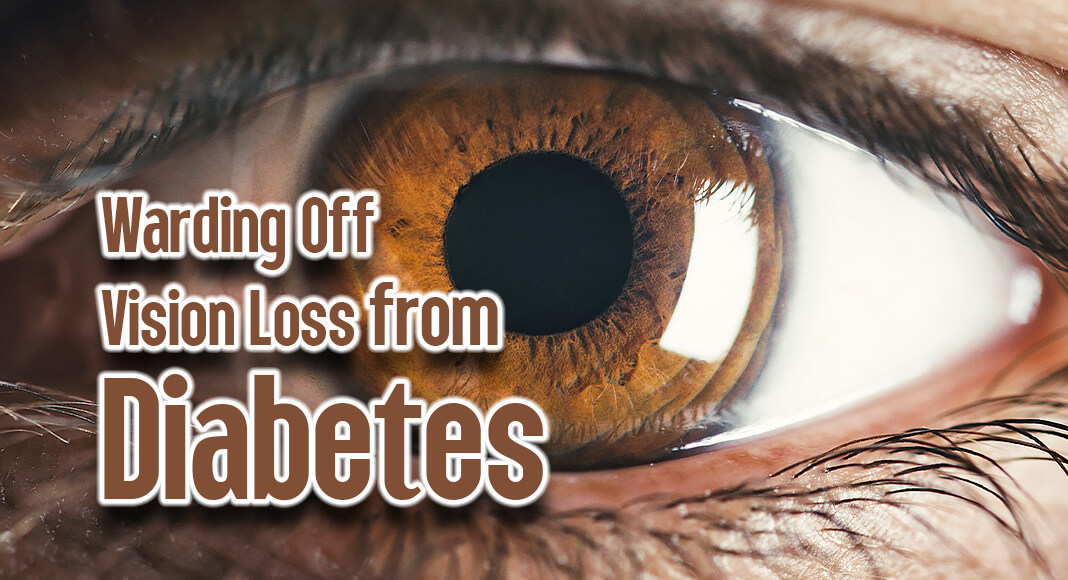
Mega Doctor News
By American Society of Retina Specialists
Newswise – An often silent condition that can steal vision, diabetic retinopathy is a complication of diabetes that may have no noticeable symptoms in the early stages and is the leading cause of irreversible blindness in working-age Americans. The condition affects nearly 8 million Americans, and that number is expected to double by 2050. Thankfully, people with diabetes who recognize their risk of vision complications and get regular dilated eye exams, learn the signs and symptoms to watch for, and seek expert treatment from a retina specialist can protect their sight.
A 2023 survey of 1,000 Americans 40 and older commissioned by the American Society of Retina Specialists (ASRS) revealed a frightening lack of knowledge about diabetic retinopathy that could put millions at risk for vision loss. In fact, nearly two-thirds of Americans 40 and older (64%) did not know that one of the causes of spots or floaters in their vision is due to diabetic retinopathy. And more than half who took the survey (51%) did not know that people with diabetes who have high blood pressure are more likely to develop diabetic retinopathy.
“A diabetes diagnosis means many aspects of a person’s health may be impacted including vision, yet awareness about the risk factors for and symptoms of diabetic eye disease remains too low,” said ASRS Foundation President Judy E. Kim, MD, FASRS. “Everyone with diabetes and those at risk for the condition should pay special attention to their vision. Since there are usually no symptoms at the early stages of diabetic retinopathy, getting regular dilated eye exams is extremely important to detect early signs of disease, and seeking care with a retina specialist at the first sign or symptom of diabetic retinopathy may preserve vision.”
During November’s Diabetic Eye Disease Awareness Month, America’s retina specialists urge people with diabetes, those who may be at risk or have prediabetes, and their loved ones to pay close attention to their eyesight and consider adopting lifestyle changes to help safeguard their vision.
To get started, learn the ABCDE and S of healthy habits, courtesy of Dr. Kim, to prevent vision loss from diabetes. This six-letter pneumonic for lifestyle practices can help delay or slow damage of the retina from diabetic retinopathy.
A: Keep track of your A1C and work to manage your levels, poor blood sugar control over time can worsen diabetic retinopathy.
B: Control Blood Pressure as much as possible. High blood pressure affects the blood vessels throughout the body including those in the retina.
C: Rein in high Cholesterol to avoid a build-up of plaque that can clog blood vessels and damage eyes.
D: Commit to Disciplined Eating or healthy eating, with an emphasis on colorful fresh vegetables, fatty cold-water fish, nuts rich in omega-3 fatty acids, and foods high in fiber.
E: Stay active and make regular Exercise part of your routine. Being active improves insulin resistance and helps control obesity, high blood pressure, and cholesterol which benefits eye health.
S: Just say No to Smoking. Smoking can lead to vision loss and blindness and quitting can significantly improve eye health.
Awareness of diabetic retinopathy risks and symptoms is also crucial to protecting vision. Anyone who has diabetes—including Type 1, Type 2, and gestational diabetes—is at risk of developing diabetic retinopathy. Additional factors that can increase the risk include:
- Disease duration: the longer you have diabetes, the greater the risk of developing diabetic retinopathy
- Poor control of blood sugar levels over time
- Hypertension (high blood pressure)
- Kidney disease
- High cholesterol levels
- Pregnancy
Many people have diabetic retinopathy for a long time without symptoms. By the time symptoms occur, substantial damage may have occurred. Symptoms may include:
- Blurred or distorted vision
- Difficulty reading
- The appearance of spots—commonly called “floaters”—in your vision
- A shadow across the field of vision
- Eye pressure
- Difficulty with color perception
For more information about diabetic retinopathy,visit SeeforaLifetime.org/DiabeticRetinopathy. To find your retina specialist, visit FindYourRetinaSpecialist.org.









